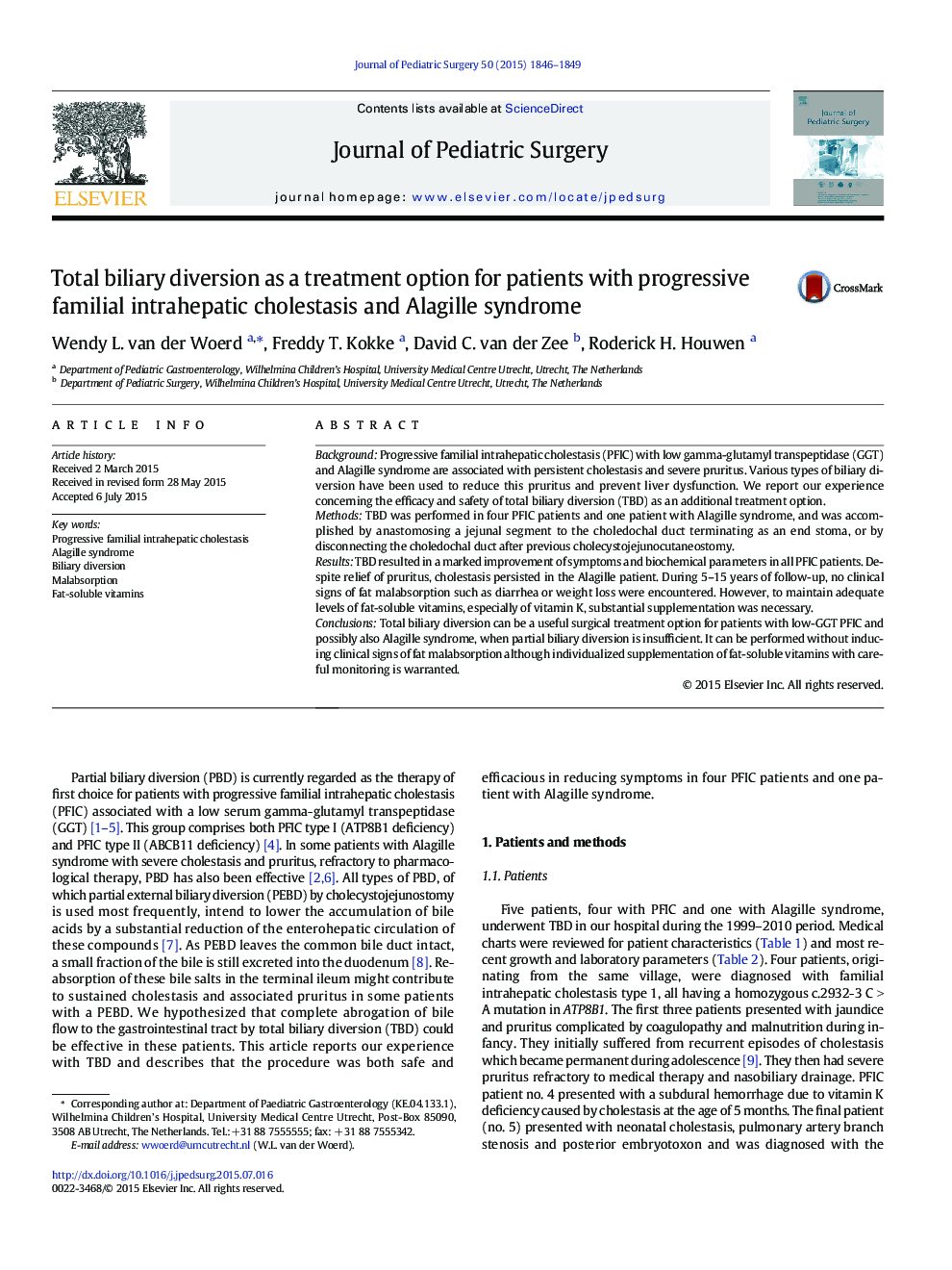| Article ID | Journal | Published Year | Pages | File Type |
|---|---|---|---|---|
| 4155090 | Journal of Pediatric Surgery | 2015 | 4 Pages |
BackgroundProgressive familial intrahepatic cholestasis (PFIC) with low gamma-glutamyl transpeptidase (GGT) and Alagille syndrome are associated with persistent cholestasis and severe pruritus. Various types of biliary diversion have been used to reduce this pruritus and prevent liver dysfunction. We report our experience concerning the efficacy and safety of total biliary diversion (TBD) as an additional treatment option.MethodsTBD was performed in four PFIC patients and one patient with Alagille syndrome, and was accomplished by anastomosing a jejunal segment to the choledochal duct terminating as an end stoma, or by disconnecting the choledochal duct after previous cholecystojejunocutaneostomy.ResultsTBD resulted in a marked improvement of symptoms and biochemical parameters in all PFIC patients. Despite relief of pruritus, cholestasis persisted in the Alagille patient. During 5–15 years of follow-up, no clinical signs of fat malabsorption such as diarrhea or weight loss were encountered. However, to maintain adequate levels of fat-soluble vitamins, especially of vitamin K, substantial supplementation was necessary.ConclusionsTotal biliary diversion can be a useful surgical treatment option for patients with low-GGT PFIC and possibly also Alagille syndrome, when partial biliary diversion is insufficient. It can be performed without inducing clinical signs of fat malabsorption although individualized supplementation of fat-soluble vitamins with careful monitoring is warranted.
